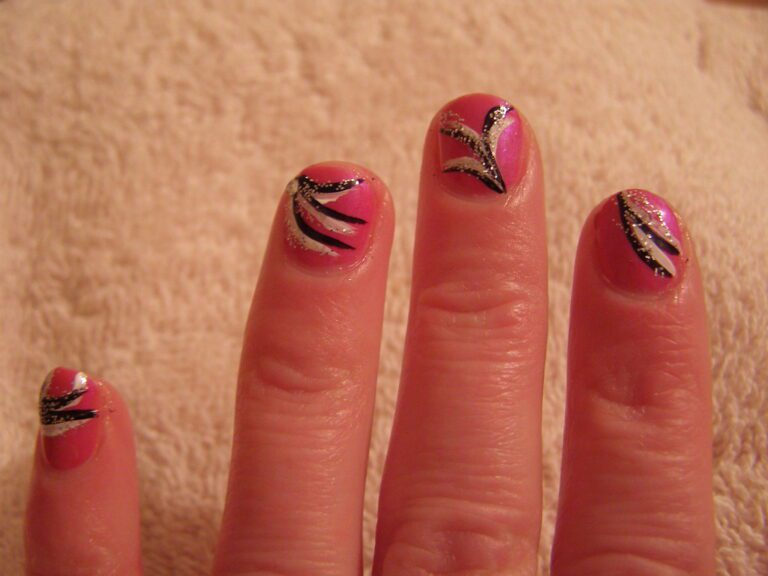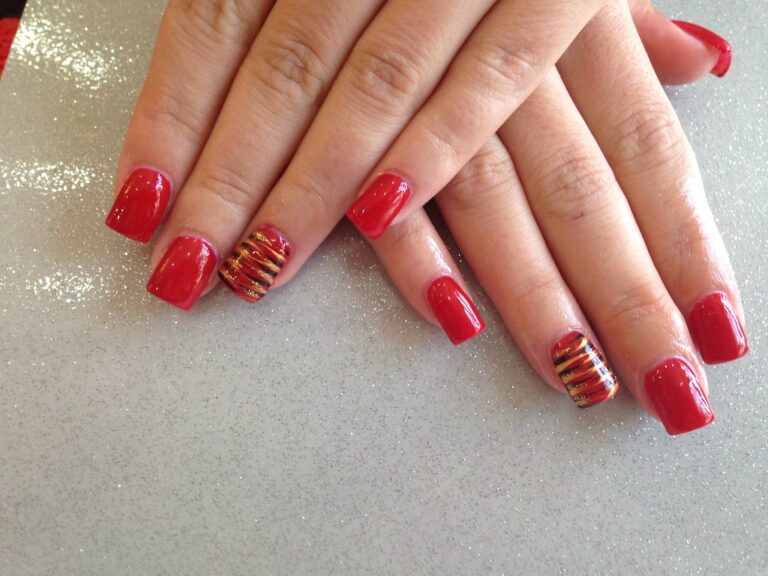“Vinyl Virtuosos: Nails for Vinyl Siding”
Vinyl siding nails play a crucial role in the installation, durability, and maintenance of vinyl siding. Understanding the basics of vinyl siding nails, proper nail selection, installation techniques, maintenance, and innovations is essential for ensuring the longevity and performance of vinyl siding. In this article, we will explore the key aspects of vinyl siding nails and provide valuable insights for homeowners and contractors alike.
Key Takeaways
- Selecting the right nail length and diameter is essential for optimal performance and durability.
- Corrosion resistance and weather considerations are important factors when choosing nails for vinyl siding.
- Color-matching nails to the siding enhances the aesthetic appeal of the installation.
- Routine inspections and timely replacement of damaged or corroded nails are crucial for maintaining siding integrity.
- Stay informed about emerging technologies and eco-friendly options for sustainable and future-proof nail solutions.
Understanding the Basics of Vinyl Siding Nails

The Role of Nails in Vinyl Siding Installation
Vinyl siding nails play a crucial role in the installation process, providing the necessary anchoring and support for the siding panels. The choice of nail type and material directly impacts the durability and longevity of the siding. It’s essential to select nails that offer corrosion resistance and secure attachment to ensure the structural integrity of the siding system. Additionally, the spacing and placement of nails are key factors in achieving a uniform and secure siding installation. Proper nail selection and installation techniques are fundamental to the overall performance and appearance of vinyl siding.
Types of Nails Suitable for Vinyl Siding
When it comes to selecting the right nails for vinyl siding, it’s crucial to consider the material and coating options for durability. Stainless steel nails are highly recommended for their corrosion resistance and long-lasting performance. Additionally, galvanized roofing nails with a minimum head diameter of 5/16" are suitable for vinyl siding installation. Here’s a quick comparison of the two options:
| Nail Type | Corrosion Resistance | Durability |
|---|---|---|
| Stainless Steel | High | Long-lasting |
| Galvanized | Moderate | Durable |
It’s important to weigh the pros and cons of each type to make an informed decision for your vinyl siding project. Remember, the right nails are essential for the longevity of your siding.
Material and Coating Options for Durability
Selecting the right material and coating for nails used in vinyl siding is crucial for ensuring long-term durability and performance. Galvanized steel nails are a popular choice due to their resistance to rust and corrosion. These nails are coated with a layer of zinc, which provides an extra barrier against the elements. Stainless steel nails are another durable option, especially in coastal areas where salt spray is a concern.
For additional protection, some nails feature a polymer coating that further enhances their weather-resistant properties. This coating helps to prevent the nail from reacting with the vinyl siding, which can lead to discoloration and degradation of the material. It’s important to choose nails with the appropriate coating to match the environmental conditions they will be exposed to.
Tip: When selecting nails for vinyl siding, consider the local climate and the potential for exposure to harsh weather. Opting for nails with the right material and coating can significantly extend the life of your siding installation.
Proper Nail Selection for Optimal Performance

Assessing the Right Nail Length and Diameter
When assessing the right nail length and diameter for vinyl siding installation, it’s crucial to consider the thickness of the siding material and the substrate. The nail length should allow for proper penetration into the substrate while ensuring a secure hold on the siding. Additionally, the diameter of the nail should be compatible with the thickness of the siding to prevent splitting or damage during installation. It’s important to select nails that provide adequate structural support without compromising the integrity of the siding material. Proper assessment of these factors ensures a successful and durable siding installation.
Corrosion Resistance and Weather Considerations
When selecting nails for vinyl siding, it’s crucial to consider the impact of weather and the potential for corrosion. Corrosion-resistant nails are essential in preventing rust and ensuring the longevity of your siding. Aluminum and stainless steel nails are often preferred for their resistance to rust and corrosion.
Galvanized nails, coated with a layer of zinc, offer an additional level of protection, especially in coastal areas where salt spray is prevalent. However, it’s important to match the type of galvanization to the environment to avoid galvanic corrosion when different metals interact.
Tip: Always choose nails with a corrosion-resistant coating that is appropriate for your specific climate and environmental conditions to maximize the lifespan of your siding.
For areas with extreme weather conditions, such as high humidity or frequent rain, selecting the right nail material and coating is even more critical. Nails must withstand these harsh elements without compromising the structural integrity of the siding.
Color-Matching Nails to Siding for Aesthetic Appeal
The final touch in vinyl siding installation is often the selection of nails that blend seamlessly with the siding itself. Color-matching nails to your siding is not just a detail for the discerning eye; it’s a consideration that can elevate the overall look of your home. Manufacturers typically offer nails in a range of colors designed to match their siding products.
When choosing the right color for your nails, consider the dominant color of your siding as well as any trim or accent colors. A well-chosen nail color can discreetly complement your home’s exterior without drawing undue attention to the hardware. For those looking to achieve a truly polished finish, custom-painted nails are also an option, though this may come at an additional cost.
Tip: Always check the color in natural light before making a final decision, as artificial lighting can alter the appearance of the nail color against the siding.
Here’s a simple guide to help you select the right nail color:
- Match the primary siding color for a uniform look.
- Choose a contrasting color for the nails if you want to highlight the siding pattern or texture.
- Consider the color of the home’s trim and choose a nail color that complements it.
- For a subtle and cohesive appearance, select a nail color one shade lighter or darker than the siding.
Installation Techniques for Vinyl Siding Nails

Spacing and Placement Guidelines
Proper spacing and placement of nails are crucial for the longevity and appearance of vinyl siding. Nails should be driven into the center of the nailing slots to allow for expansion and contraction due to temperature changes. It’s essential to leave a small gap, about the thickness of a dime, between the nail head and the siding to avoid restricting movement.
- Consistent spacing* between nails is also key. As a general rule, nails should be spaced at a maximum of 16 inches apart. However, in areas with high wind exposure, reducing the spacing to 12 inches can provide additional stability. Here’s a quick reference for nail spacing:
- Normal conditions: 16 inches
- High wind areas: 12 inches
Tip: Always check local building codes and manufacturer’s recommendations as they may dictate specific requirements for nail spacing and placement.
By adhering to these guidelines, you can ensure that your vinyl siding remains secure and maintains its aesthetic appeal over time.
Driving Nails: Best Practices for Secure Attachment
Securing vinyl siding properly requires not just the right nails, but also the correct technique for driving them. The goal is to attach the siding firmly while allowing for the natural expansion and contraction due to temperature changes. Here are some best practices:
- Use a hammer with a clean striking face to avoid damaging the nail head or siding.
- Drive nails straight and level to ensure even distribution of force.
- Nails should be fastened at the center of the nailing slot to permit movement.
- Do not drive the nail too tightly; a slight gap is necessary for the siding to ‘float’.
Tip: Always leave about 1/32 inch (roughly the thickness of a dime) between the nail head and the siding to allow for thermal expansion.
By adhering to these guidelines, you can achieve a secure attachment that stands the test of time and weather. Remember, improper nailing can lead to buckling, warping, or even detachment of the siding panels.
Avoiding Common Mistakes During Nail Installation
Proper installation of nails is crucial for the longevity and performance of vinyl siding. One common pitfall is driving nails too tightly, which can restrict the natural expansion and contraction of the siding due to temperature changes. Nails should be fastened at the center of the nailing slot and allowed a slight wiggle room to accommodate movement.
Correct nail placement is equally important. Nails should be driven straight and level to prevent distortion of the siding panels. Overlapping panels must be nailed correctly to avoid buckling. Here’s a quick checklist to help you avoid these errors:
- Ensure nails are centered in the slots
- Allow for a 1/32" to 1/16" gap between the nail head and siding
- Drive nails straight and level
- Do not force the panels tightly together
Tip: Always refer to the manufacturer’s guidelines for specific nailing instructions to prevent voiding any warranties.
By steering clear of these installation missteps, you can ensure a secure and aesthetically pleasing vinyl siding that stands the test of time.
Maintenance and Repair: Caring for Your Siding Nails

Routine Inspections for Nail Integrity
After conducting routine inspections for nail integrity, it is crucial to address any damaged or corroded nails promptly. This ensures the structural integrity of the siding and prevents further damage. Regular maintenance and timely repairs are essential for prolonging the lifespan of both the nails and the siding. Implementing a proactive approach to nail care can significantly reduce the risk of extensive damage and costly replacements in the future.
Replacing Damaged or Corroded Nails
When it comes to maintaining the integrity of your vinyl siding, replacing damaged or corroded nails is a crucial step. Over time, nails can succumb to the elements, leading to rust, corrosion, or loosening. It’s essential to periodically check for any signs of wear and take action promptly.
To replace a damaged nail, carefully remove the nail without causing additional damage to the siding. Use a nail puller or pliers for this task. Once removed, replace it with a new nail that matches the original in terms of length, diameter, and material. Ensure the new nail is corrosion-resistant to prevent future issues.
Tip: When driving in the new nail, do not drive it in too tightly. Vinyl siding needs room to expand and contract with temperature changes, so the nail should be fixed loosely enough to allow for this movement.
Follow these steps to ensure your siding remains secure and aesthetically pleasing for years to come.
Long-Term Strategies for Nail and Siding Longevity
Ensuring the longevity of vinyl siding and the nails that secure it requires a proactive approach. Preventative maintenance is key; this includes periodic inspections to detect early signs of wear or damage. It’s also important to consider the environmental factors that can affect the siding and nails over time, such as extreme temperatures, moisture, and UV exposure.
To maintain the integrity of your siding and nails, follow these steps:
- Conduct semi-annual inspections, especially after severe weather events.
- Clean the siding regularly to prevent the buildup of dirt and grime, which can lead to moisture retention and eventually, decay.
- Trim nearby trees and shrubbery to prevent them from scratching or abrading the siding.
- Address minor issues promptly to prevent them from escalating into major repairs.
Tip: Always use manufacturer-recommended products and techniques for cleaning and maintenance to avoid inadvertently damaging the siding or voiding warranties.
By adhering to these practices, homeowners can significantly extend the life of their vinyl siding and nails, ensuring that their home remains beautiful and well-protected for years to come.
Innovations in Vinyl Siding Nails

Emerging Technologies in Nail Manufacturing
The landscape of nail manufacturing is witnessing a significant transformation with the advent of emerging technologies. These advancements aim to enhance the efficiency, precision, and sustainability of the production process. One notable innovation is the integration of in-line cutting and punching systems, which streamline the manufacturing of nails by performing multiple processes in a single pass. This not only reduces material waste but also optimizes the production time.
Another area of technological progress is the development of smart manufacturing techniques. These systems employ sensors and data analytics to monitor the production process, ensuring consistent quality and reducing the likelihood of defects. As a result, the nails produced are more reliable and better suited for their intended purpose in vinyl siding applications.
Tip: When selecting nails for vinyl siding, consider manufacturers that utilize these cutting-edge technologies to ensure a product that meets the highest standards of quality and performance.
Eco-Friendly and Sustainable Nail Options
When it comes to choosing sustainable and environmentally friendly nail options for vinyl siding, it’s important to consider the long-term impact on the environment. One of the key factors to look for is the use of recycled materials in nail manufacturing, which reduces the overall carbon footprint. Additionally, opting for nails with eco-friendly coatings that minimize chemical leaching into the environment is a responsible choice. Another aspect to consider is the biodegradability of the nails, ensuring that they can be disposed of in an environmentally friendly manner. Overall, selecting sustainable nails contributes to a greener approach to siding installation and maintenance.
The Future of Nailing Techniques in Siding
As the industry continues to evolve, innovations in vinyl siding nails are paving the way for enhanced durability and installation efficiency. Manufacturers are focusing on developing advanced materials and coatings to combat corrosion and weather-related challenges. Additionally, emerging technologies are revolutionizing the manufacturing process, resulting in sustainable and eco-friendly nail options. These innovations are poised to shape the future of nailing techniques in siding, offering homeowners and contractors improved performance and longevity.
Vinyl siding nails have undergone significant innovations in recent years, revolutionizing the way siding is installed and secured. These advancements have led to increased durability, improved aesthetics, and enhanced installation efficiency. At NAILinspire.com, we’re dedicated to showcasing the latest developments in nail art, including cutting-edge vinyl siding nails that are changing the game. Explore our ultimate online nail art design library to discover the future of siding installation and unleash your creativity.
Frequently Asked Questions
What are the best nails for vinyl siding installation?
The best nails for vinyl siding installation are stainless steel or aluminum nails with a corrosion-resistant coating to ensure durability and longevity.
How do I choose the right nail length and diameter for vinyl siding?
The nail length and diameter for vinyl siding should be chosen based on the thickness of the siding material. It’s important to select nails that penetrate the sheathing and framing without piercing through the siding.
Can I paint the nails to match the color of the siding?
Yes, you can paint the nails to match the color of the siding for a seamless and aesthetically pleasing appearance. Use a high-quality exterior paint that is designed for metal surfaces.
What maintenance is required for vinyl siding nails?
Routine inspections for nail integrity and corrosion are recommended. Replace any damaged or corroded nails to maintain the structural integrity of the siding.
Are there eco-friendly options for vinyl siding nails?
Yes, there are eco-friendly options such as recycled aluminum nails or biodegradable polymer nails that offer sustainable alternatives for vinyl siding installation.
What are the emerging technologies in nail manufacturing for vinyl siding?
Emerging technologies in nail manufacturing include advanced coatings for enhanced corrosion resistance, precision-engineered nail heads for secure attachment, and innovative materials for eco-conscious consumers.






